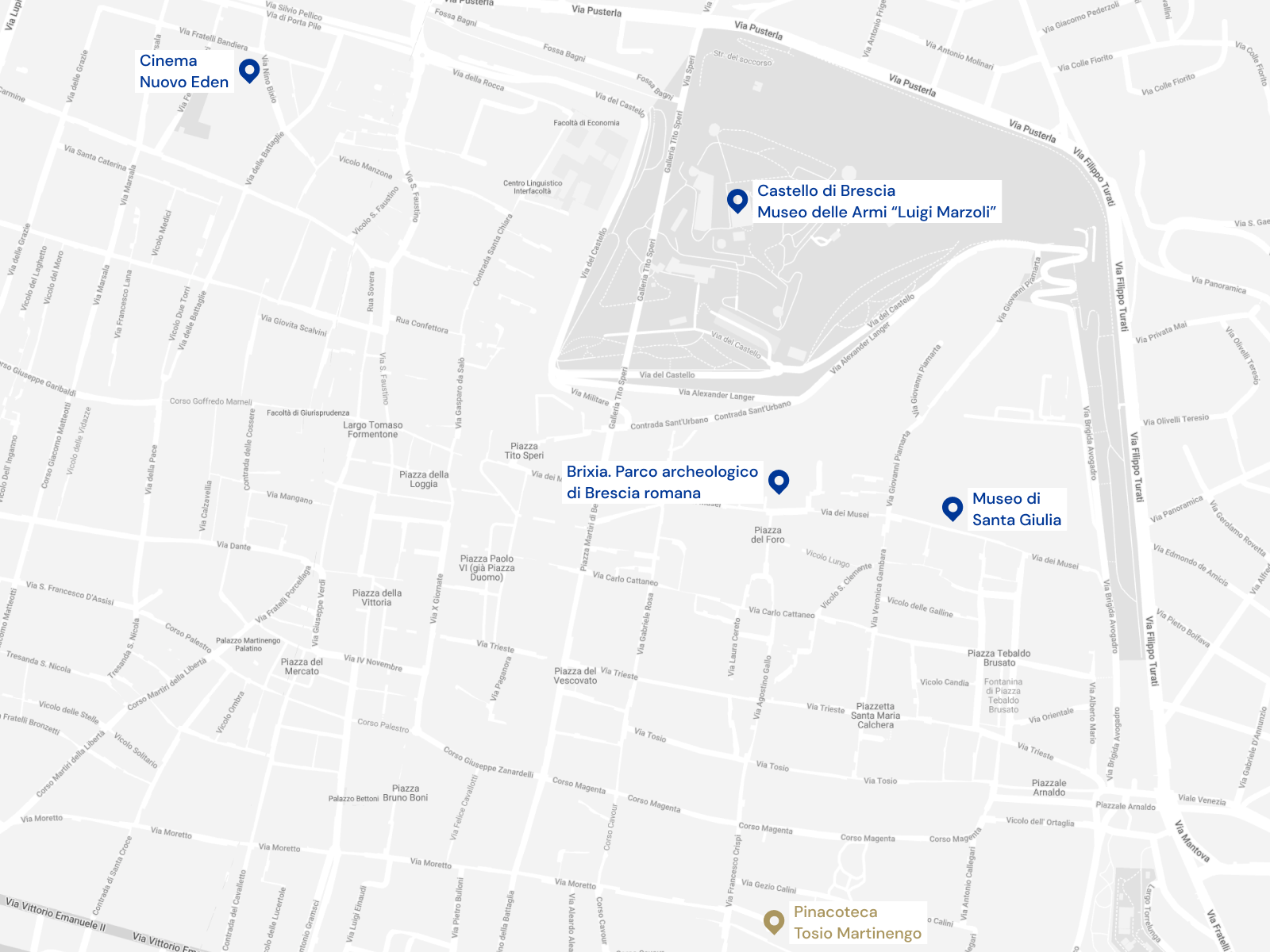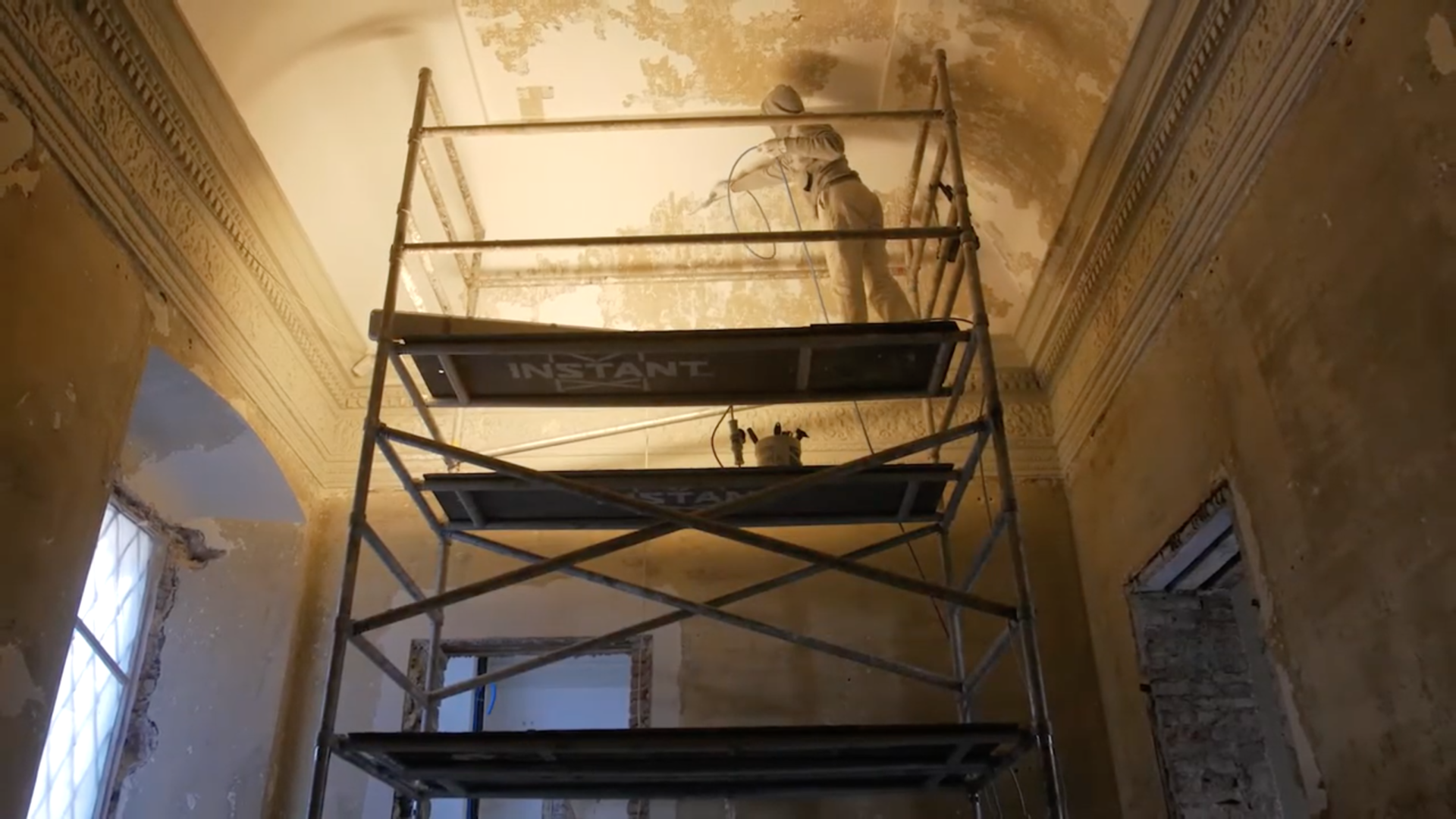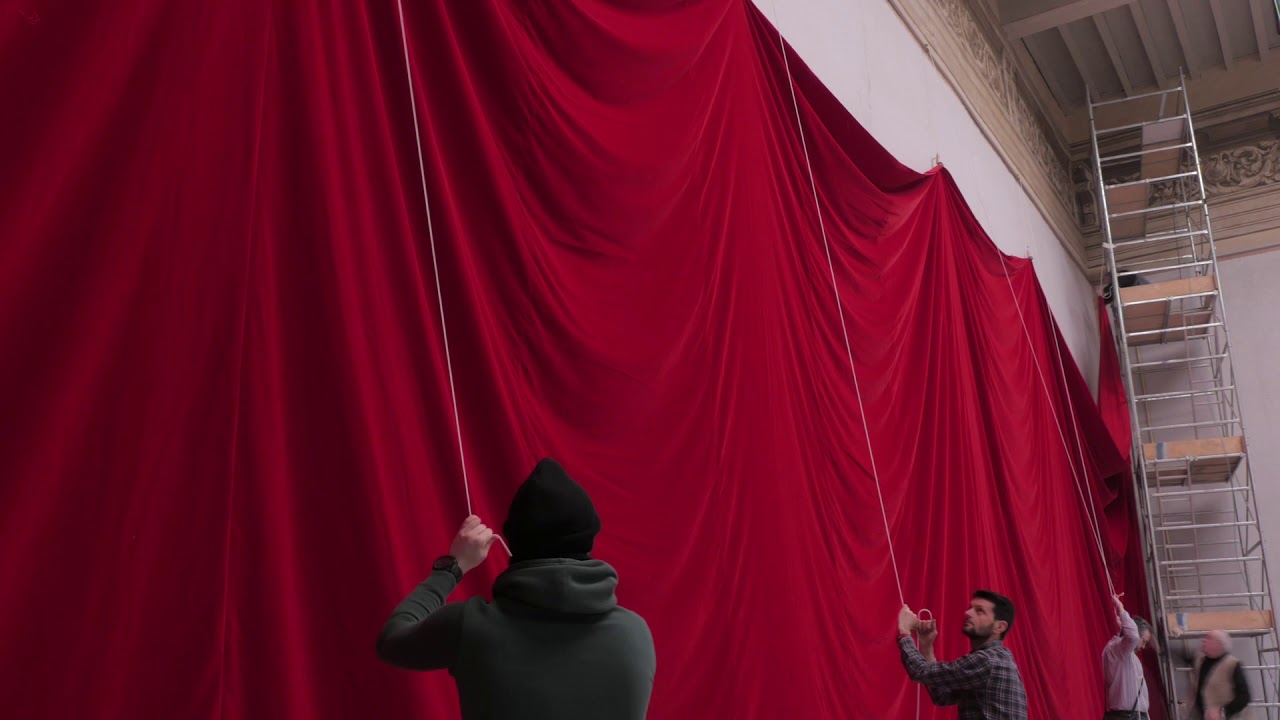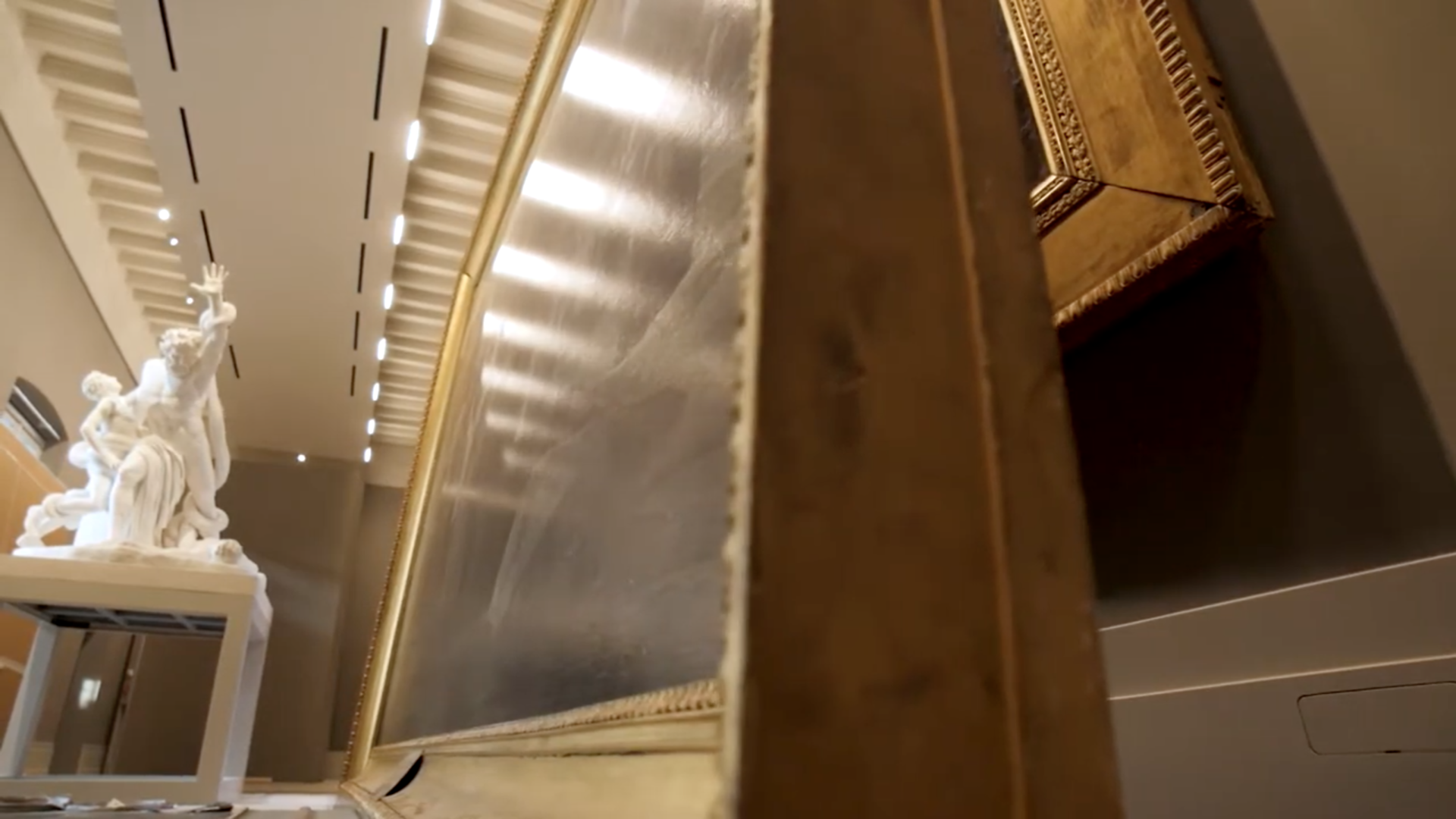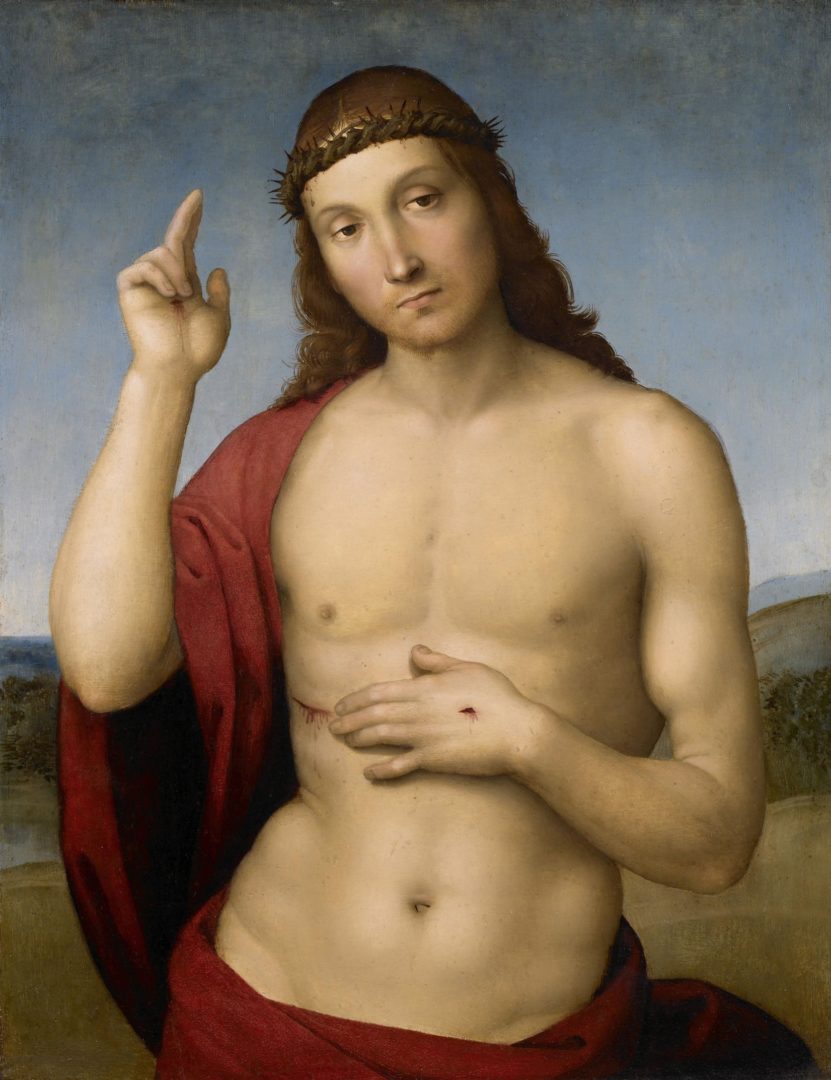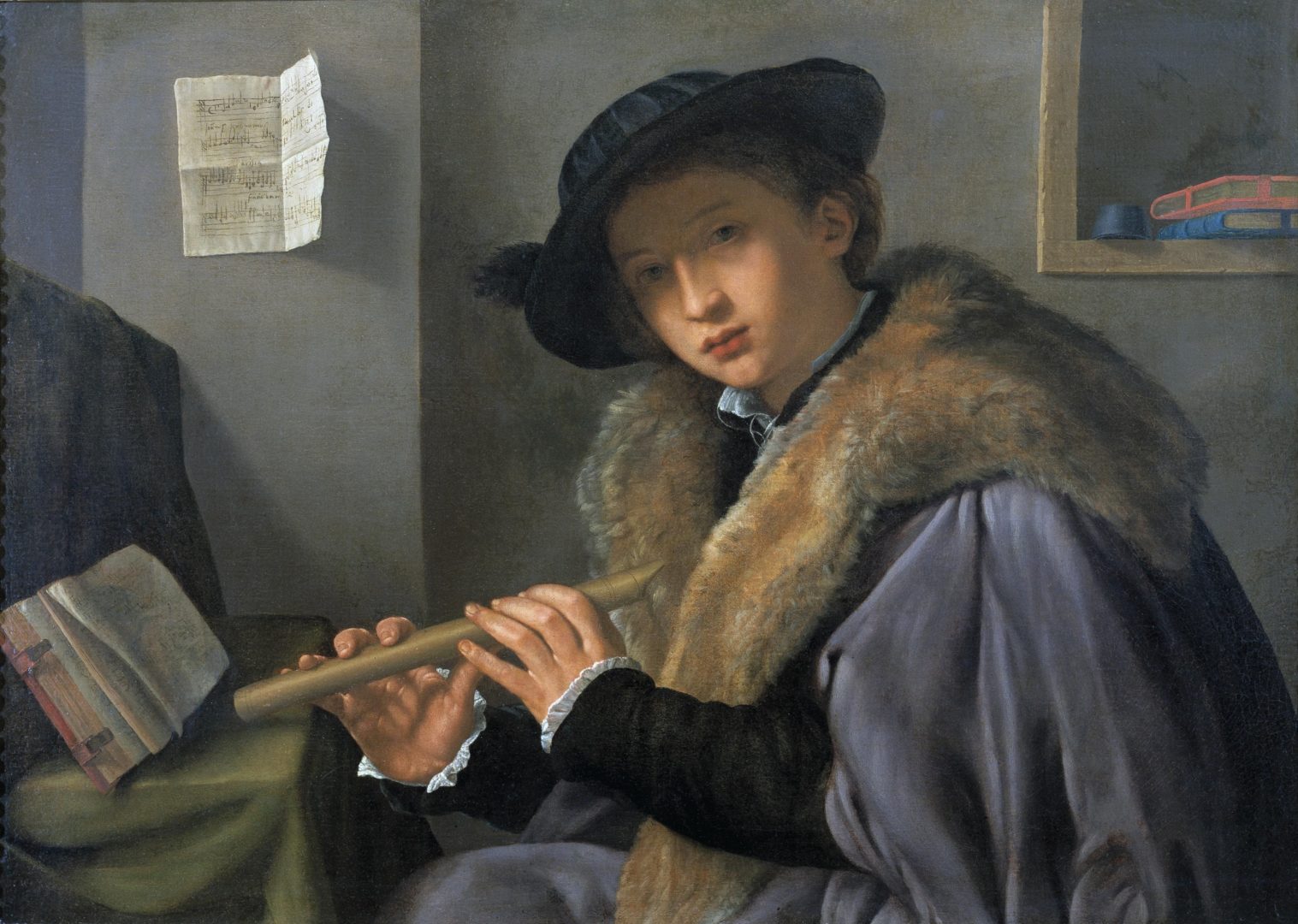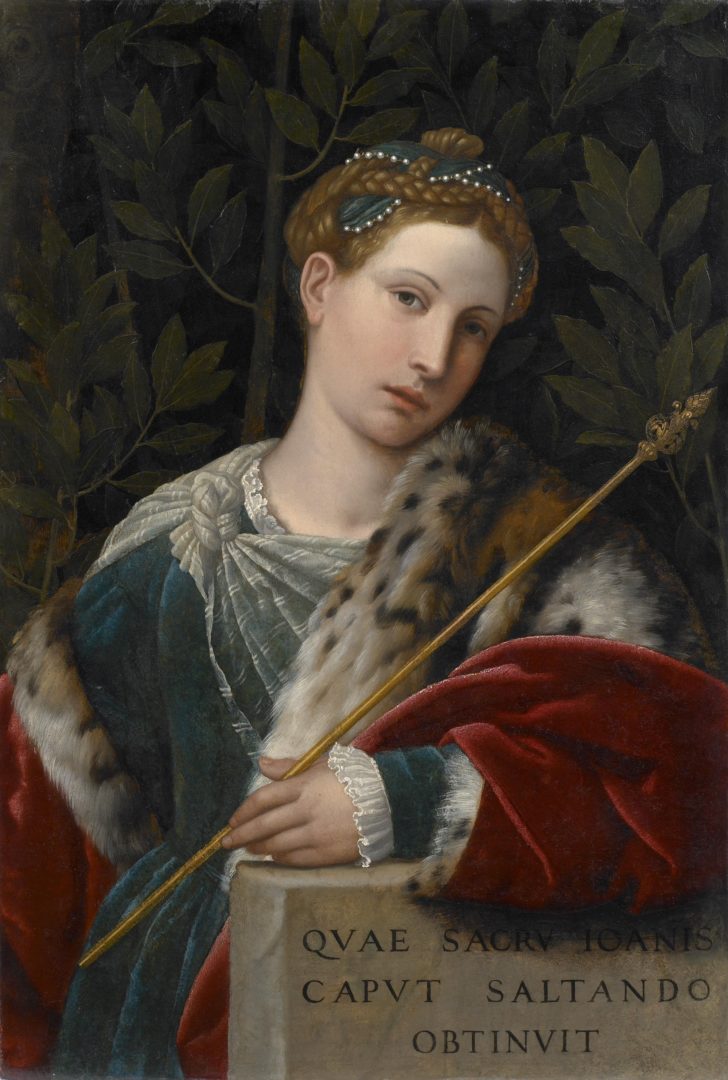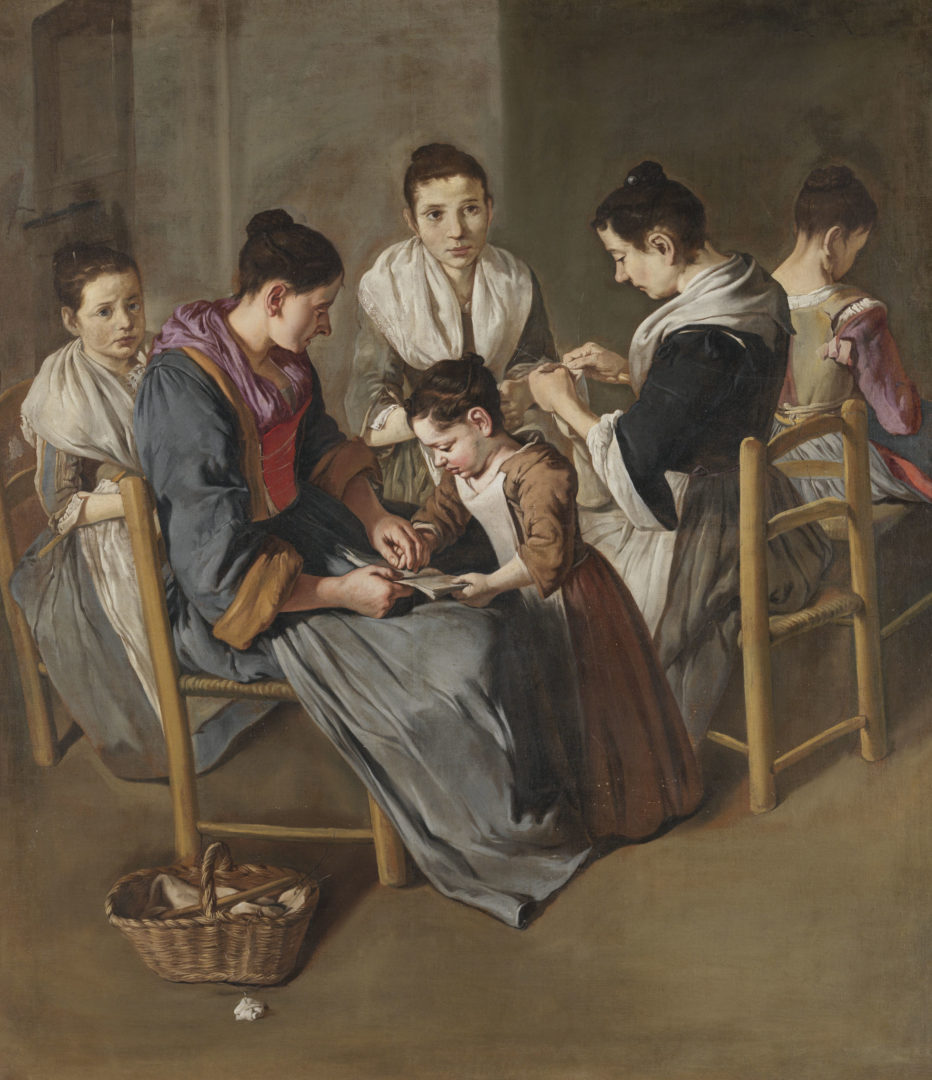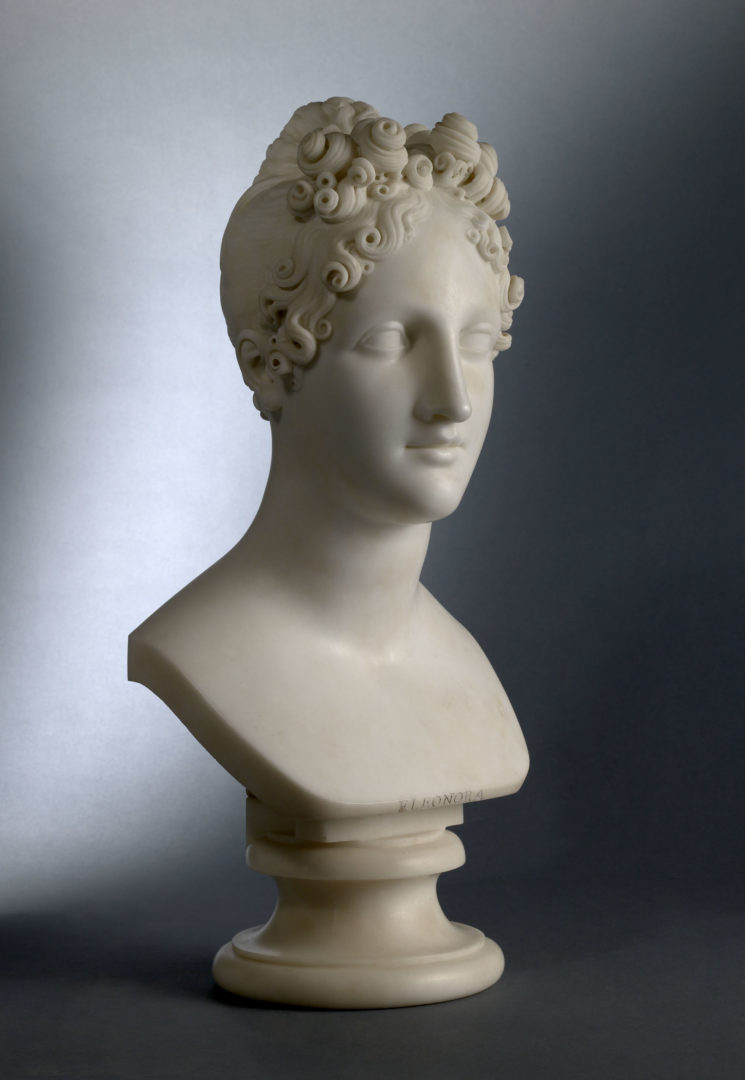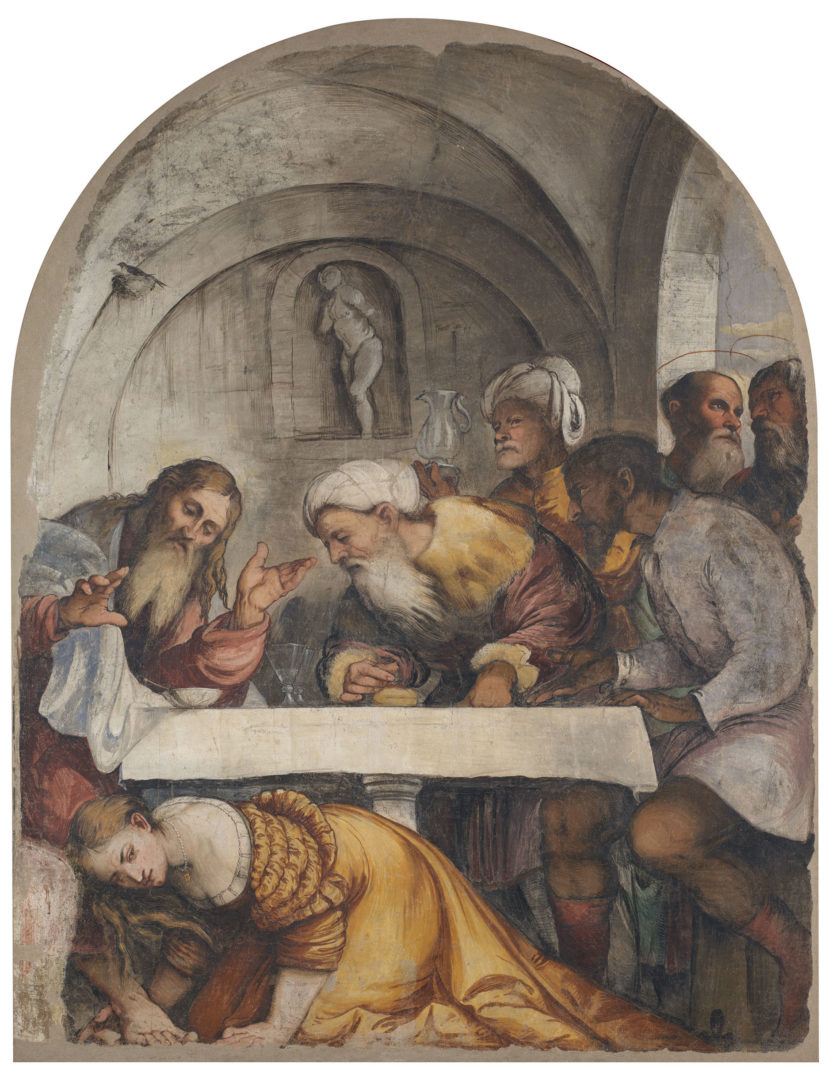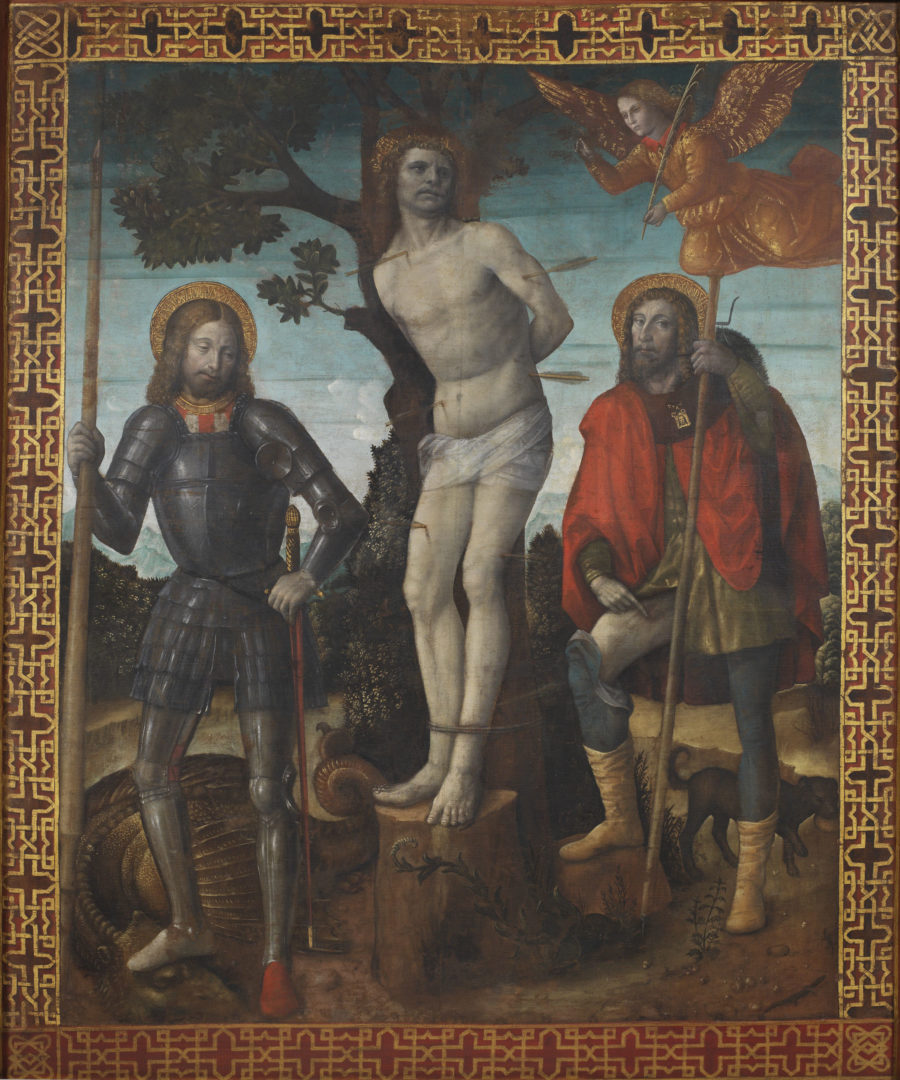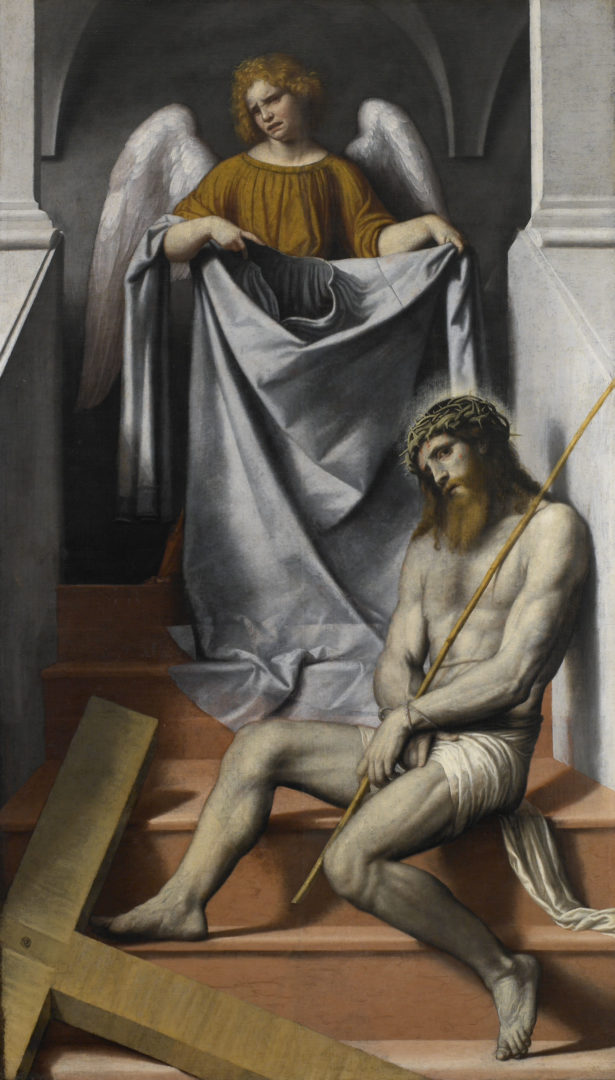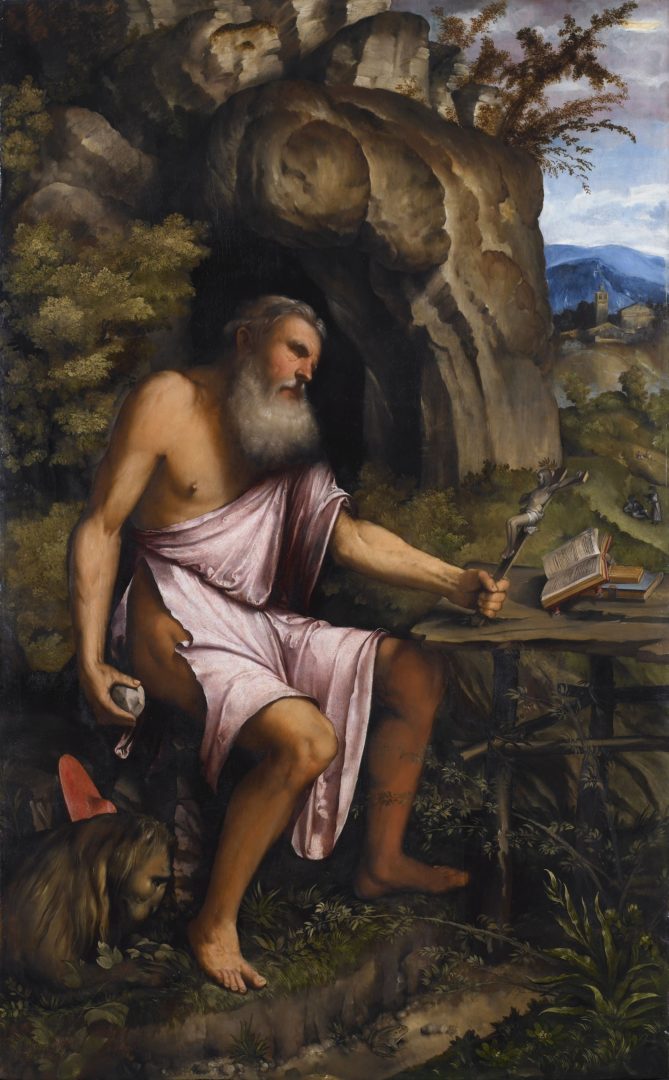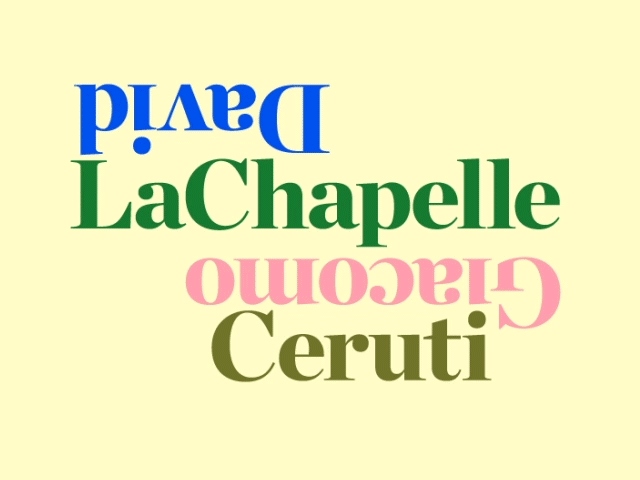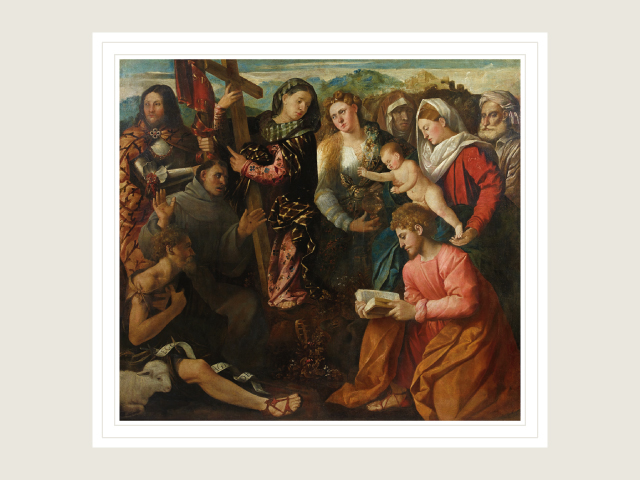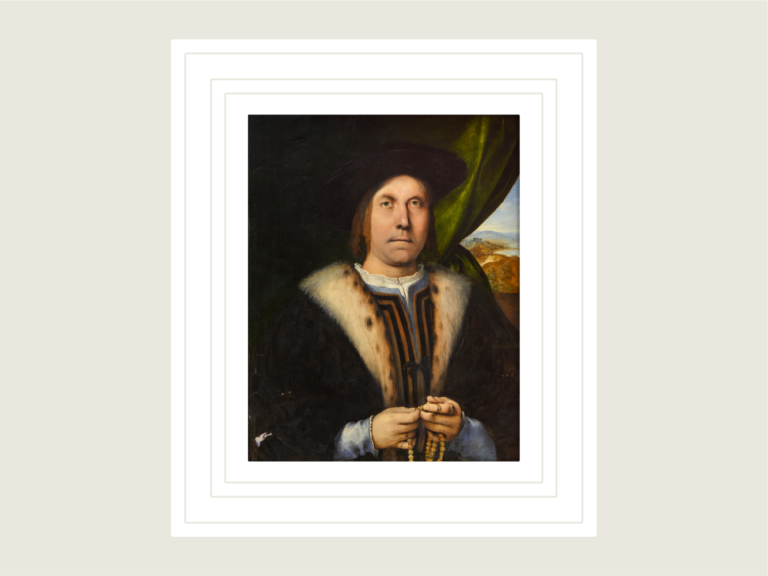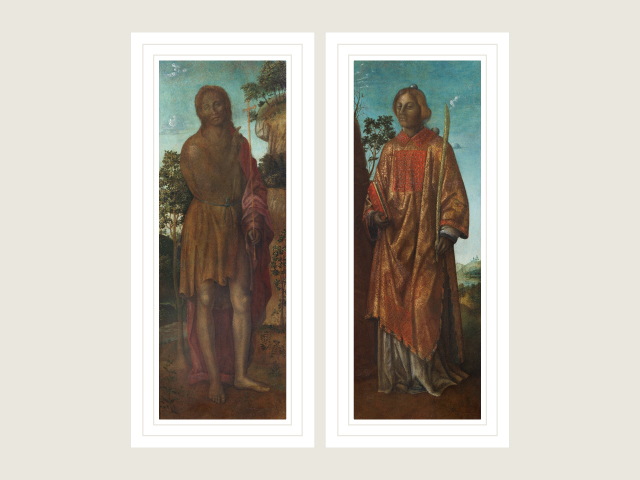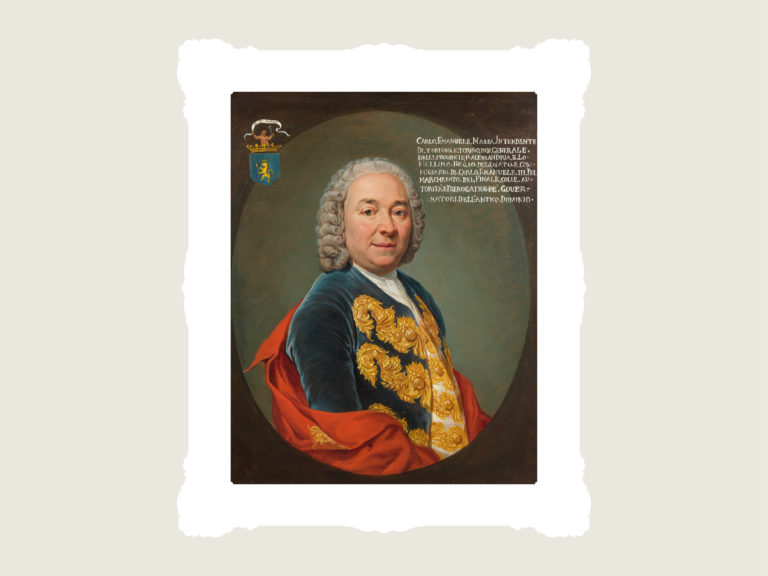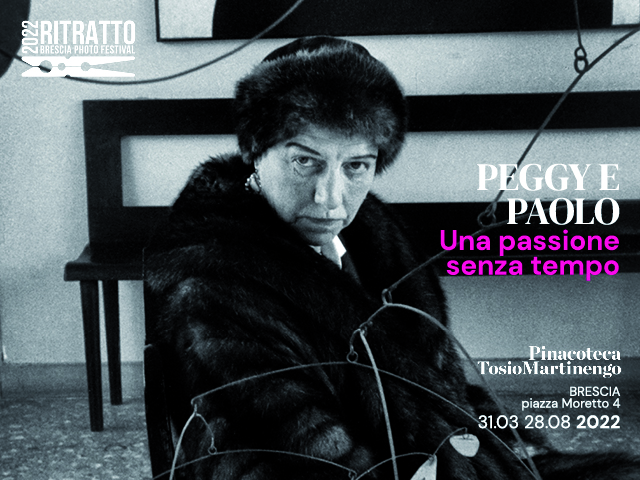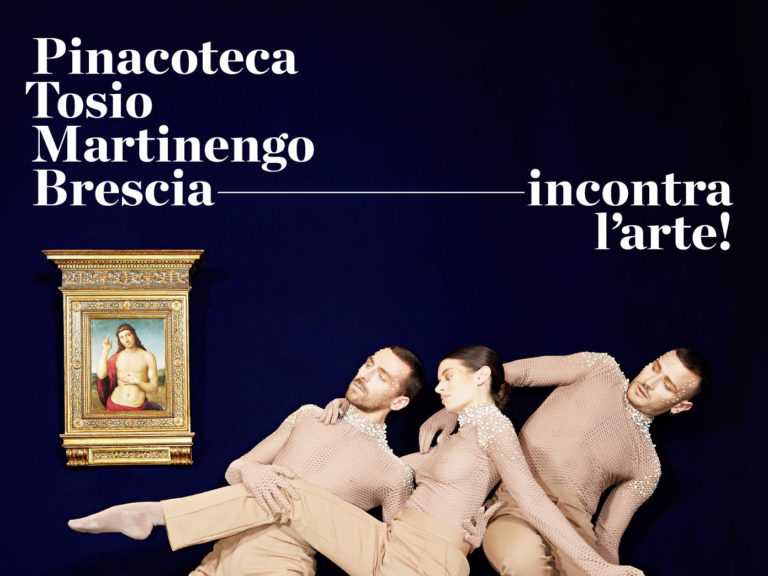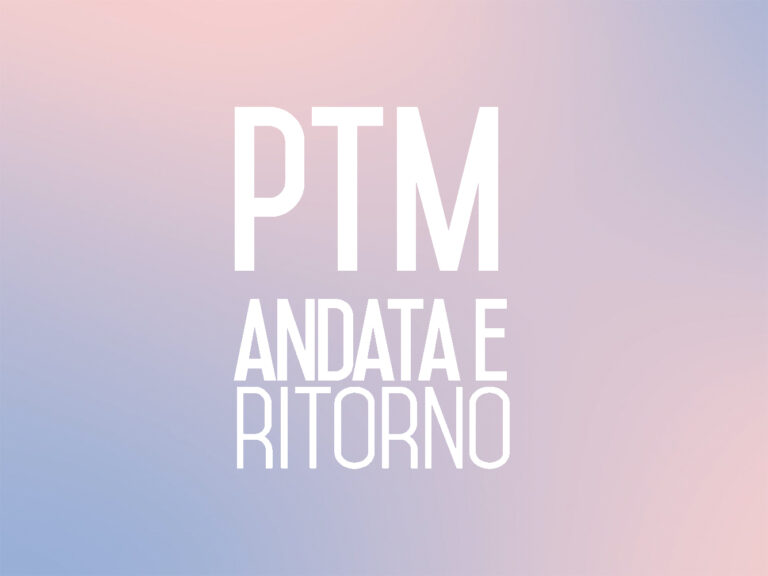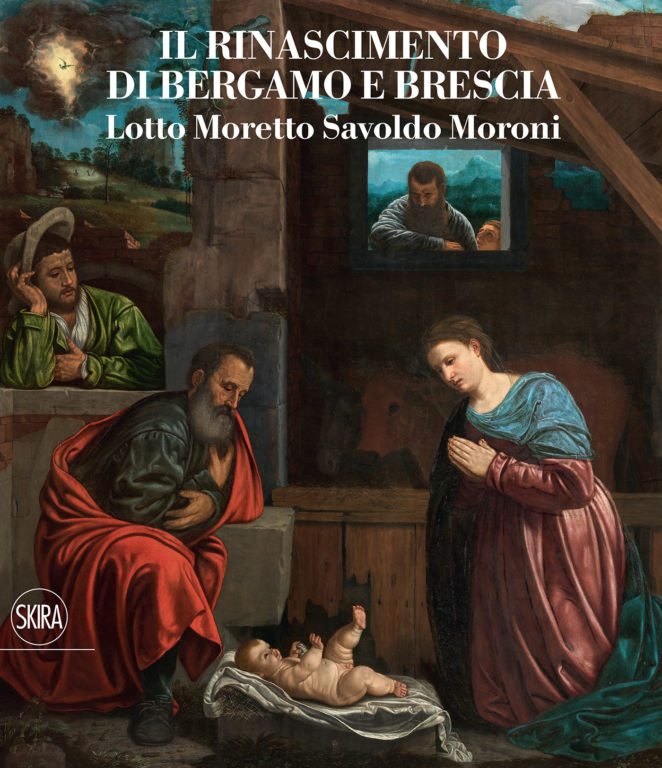Pinacoteca Tosio Martinengo
Completely renovated in 2018, the Pinacoteca houses a splendid and selected art collection in the elegant premises of Palazzo Martinengo da Barco.
The museum display starts with 14th century works, juxtaposing exquisite decorative artworks and paintings. Outstanding masterpieces as Raphael’s Angel and the Christ Blessing and Lorenzo Lotto’s The Adoration of the Shepherds, lead to the heart of the collection, consisting of Brescian Renaissance paintings by Savoldo, Romanino and Moretto whose pictures dedicate particular attention to reality, an approach also shared in the very touching season of Giacomo Ceruti’s “pitocchi”. The itinerary ends with 19th century works by Canova and Hayez.
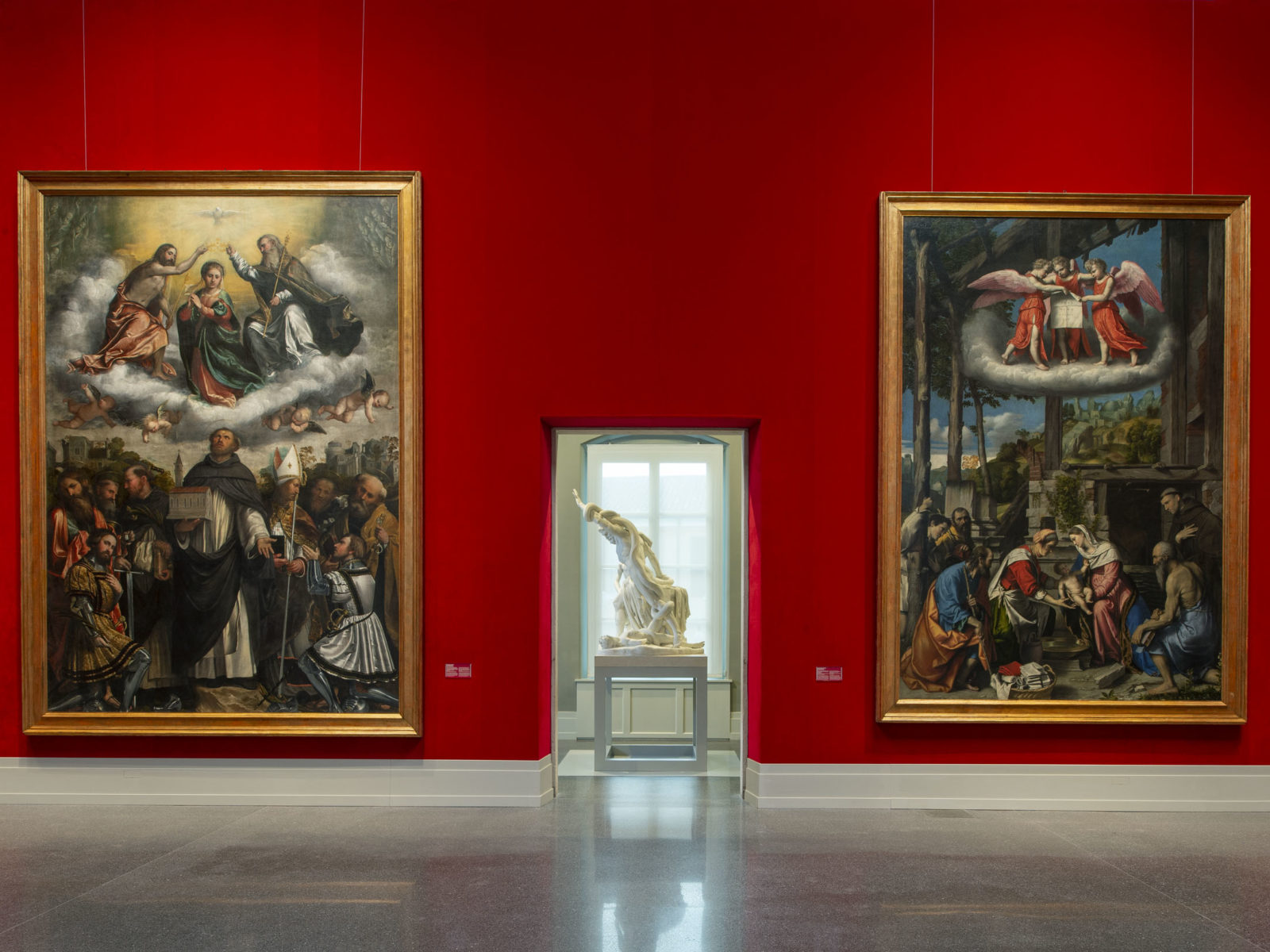
The Portrait of a young man with a flute by Savoldo it will be missing for a few months from the rooms of the palace, in order to be subjected to a careful restoration work: this will allow a better and full readability of the artpiece.
Currently, at the Pinacoteca Tosio Martinengo, it is possible to visit the PTM Andata – Ritorno Domenico Ghidoni. Lions.
Museum

In rooms finely lined with coloured velvets and frescoed ceilings, visitors encounter the works of masters such as Raphael, Lorenzo Lotto, Vincenzo Foppa, Savoldo, Romanino, Moretto, Giacomo Ceruti, Andrea Appiani, Antonio Canova, Berthel Thorvaldsen and Francesco Hayez, as well as marvellous sculptures, refined Venetian glass, and curious cabinets populated by pygmies.
History of the Museum
The Pinacoteca was originally housed in Palazzo Tosio, since it consisted of the collection of paintings, sculptures, prints, drawings and objets d’art that Count Paolo Tosio donated to the City of Brescia in 1832. A cultured man and a poet himself, in the early nineteenth century Count Tosio used to welcome the cultural personalities of Brescia in his salon. In his will, drawn up on 12 March 1832 and executed after the death of his wife Paolina in 1846, Paolo Tosio donated his art collections and library to the city “for them to be perpetually preserved in Brescia and made available to the public”.
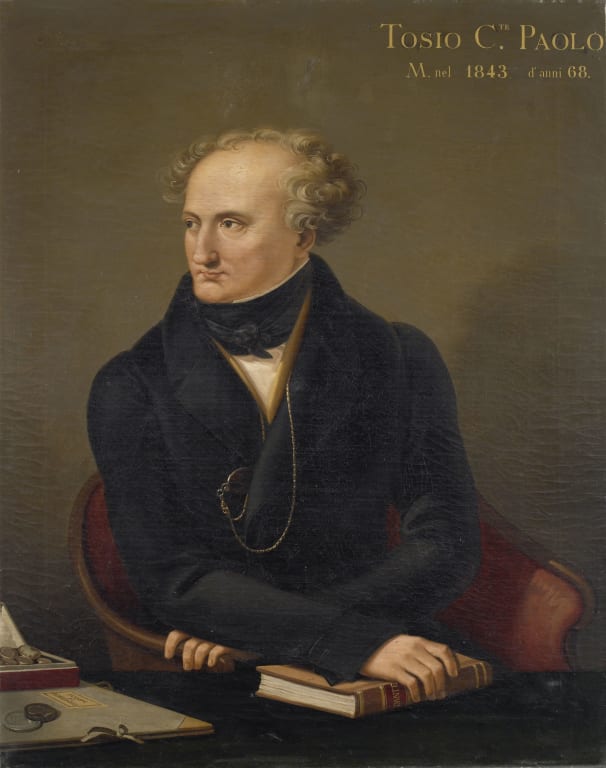
In 1851 the Tosio Gallery was opened to the public, respecting the original layout of the works of art and furnishings in the palazzo and recording a progressive increase in the number of works on display, thanks above all to the addition of paintings donated or bequeathed by private collectors and paintings owned by the municipality, including large altarpieces from demolished or suppressed churches.
The continuous growth of the collection required the opening of a second picture gallery: Francesco Leopardo Martinengo da Barco’s bequest of his large palazzo to the city in 1884, allowed for a more rational distribution for the over six hundred objects that crowded the rooms of Palazzo Tosio. In 1889, following extensive renovation work directed by the architect Antonio Tagliaferri, Palazzo Martinengo da Barco became the seat of the Martinengo Municipal Picture Gallery with a display that included additional pieces that had not been part of Tosio’s legacy.
In 1903 the city administration due to economic reasons, decided to merge the two municipal picture galleries into one in Palazzo Martinengo da Barco. After a complex process of reorganisation, the Pinacoteca Tosio Martinengo Art Gallery was finally established and opened to the public on 27 September 1914.
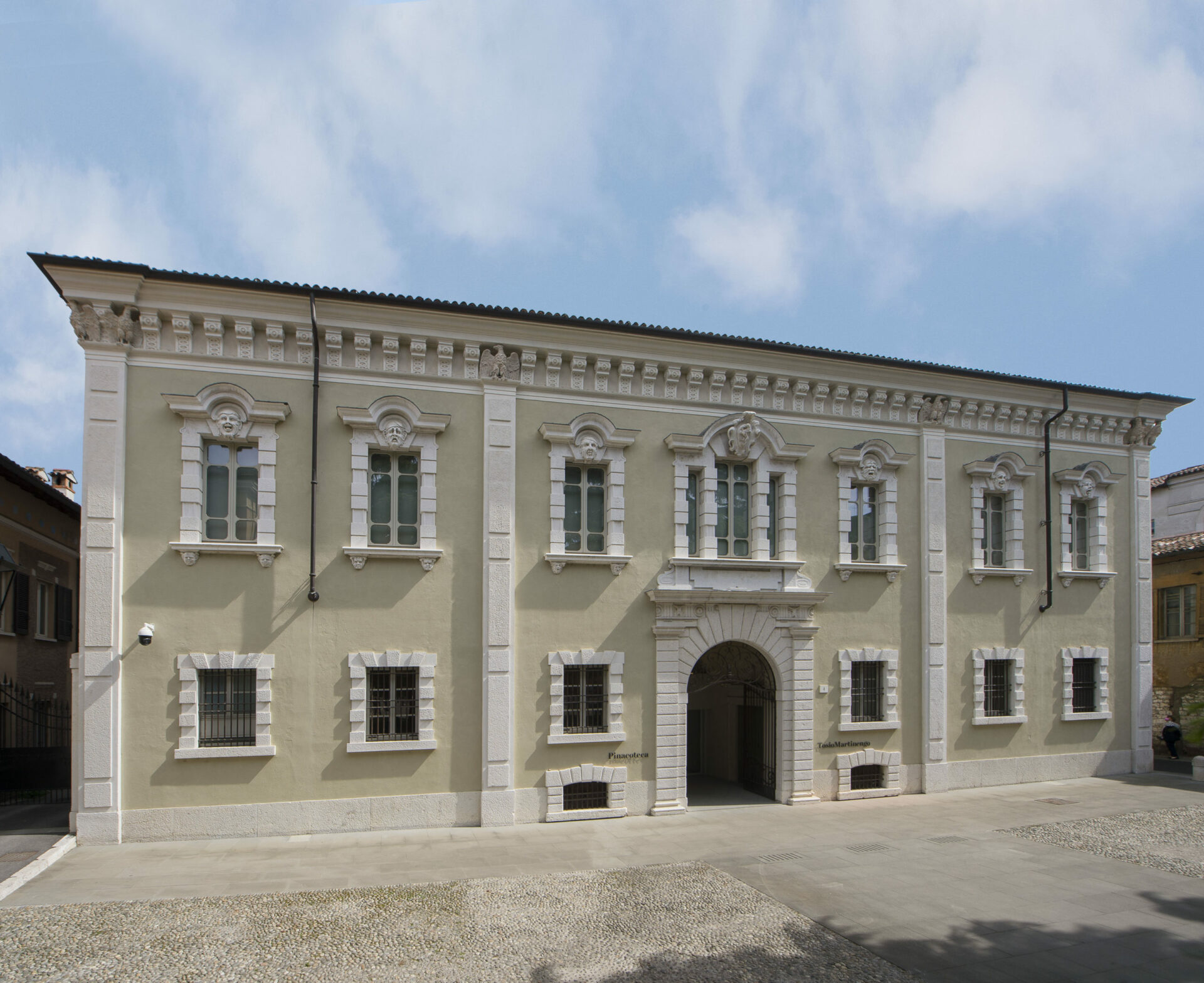
The Tosio collection: from Raphael to Canova
At the time of its foundation, the Tosio collection – despite including remarkable antique masterpieces – was mostly known for its many contemporary paintings and sculptures by famed artists of the time. Assembled through Tosio’s collecting activity and direct commissions, this part of the collection included works by key neoclassical artists such as Andrea Appiani, Antonio Canova, Berthel Thorvaldsen, Pelagio Palagi and Luigi Basiletti author of many landscape paintings. Romantic themes and subjects remained within the boundaries of academic painting aesthetic standards, as evidenced first and foremost by The Refugees of Parga.
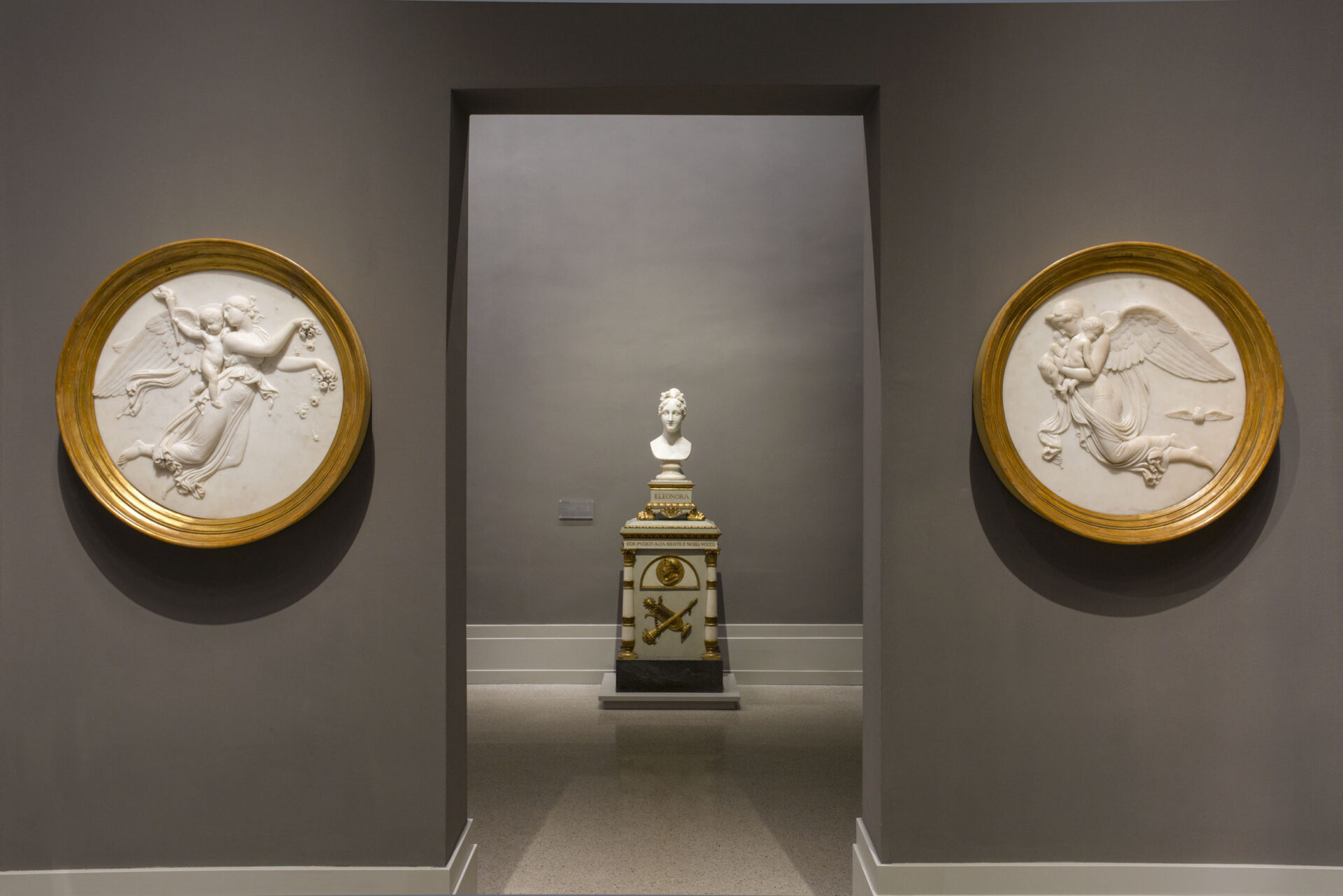
The same predilection for more classical artistic expressions is also reflected in the Count’s selection of antique paintings. In the space of two years – between 1821 and 1822 – Tosio bought three paintings attributed to Raphael: the Christ Blessing, the Madonna of the Pinks (whose attribution at the time was still uncertain, and that today is considered to be the work of Raphael’s workshop) and a “portrait of a young man” that twentieth-century studies have identified as one of the angels from the destroyed altarpiece of San Nicola di Tolentino, Raphael’s earliest documented painting.
The ideals of purity, harmony and sweetness embodied in Raphael’s work can also be seen in many of the most important artworks in the Tosio collection: from Francesco Francia’s The Virgin and Child with the Infant Saint John to Lorenzo Lotto’s The Adoration of the Shepherds. Among Brescian painters, Tosio focused his attention exclusively on Moretto, whom Vasari had already compared to the master from Urbino, which in time led to Moretto being known as the “Raphael of Brescia”, a sobriquet which soon became popular in the cultural circles close to Tosio. An important aspect that must not be overlooked is that the profound religious and devotional sentiment of Moretto’s and Lotto’s paintings was of interest to those who, like Tosio, cultivated a sincere personal faith and wished to find an authentic and immediate expression of that faith in art.
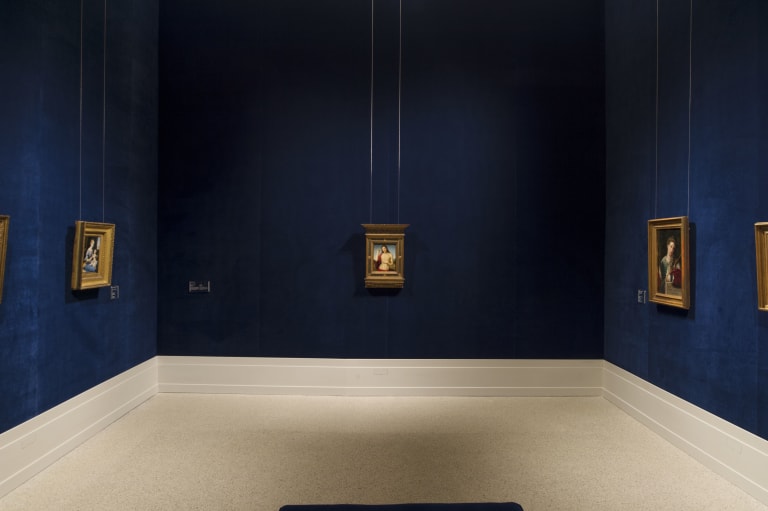
The 16th century Brescian School
The artistic history of the city of Brescia reached a high point in the first half of the sixteenth century, when the city became home to a current of strong realistic orientation that was completely innovative on the Italian art scene of the time.
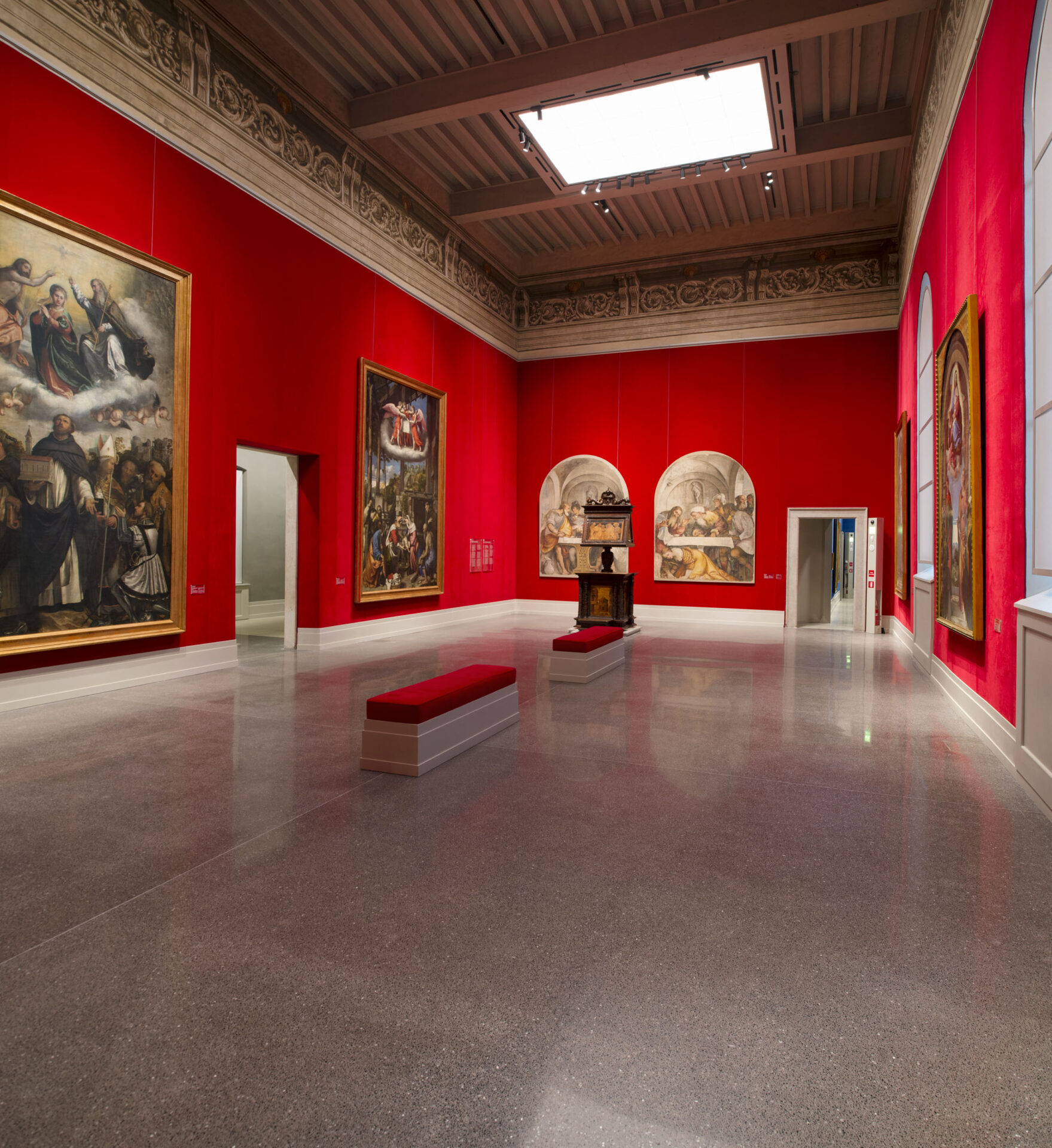
The origins of this development lie in the work of Vincenzo Foppa, whose work is presented in Room 2 of the Pinacoteca. This room also houses his last work, the Banner of Orzinuovi: the final outcome of his pictorial research. The subject of Roberto Longhi’s in-depth studies, the banner was recognised by the art historian as a true manifesto of that painting of reality which – far removed from Renaissance idealisations – pursues an extreme naturalism. These indications were supported a few decades later by Giovanni Testori, who recognised in the Banner of Orzinuovi “the most solemn realist affirmation of European painting prior to the genius of Caravaggio”: a “masterpiece of miserable and silent flesh”, an “authentic flag of a revolt made out of misery, indigence, rags and pain”.
The generation that followed Foppa’s – which saw a significant opening towards Venetian painting, and in particular towards the teachings of Titian – was dominated by three outstanding artists: Savoldo, Romanino and Moretto, who made the Brescian School, in the words of Longhi, “the richest in intelligence that northern Italy boasted at that time”. Following very different biographical and stylistic paths, the three painters reached diversified results, extensively documented in the Pinacoteca’s collection.
In Savoldo’s The Flute Player, the figures, austere in their essential attitudes and meditative expressions, are clad in textural draperies with light creating exquisite effects accentuated by continuous plays of light and shadow. For this aspect Savoldo is considered one of the key points of reference for Caravaggio’s painting.
Romanino’s production combines the exquisite colour renditions of his canvases – such as in the great silver mantle of the Virgin of his Nativity – and the very modern language he adopts in his frescoes, like his two Last Suppers from Rodengo on display in the hall of the Pinacoteca. In these wall paintings, the monumentality of the figures and the theatricality of the scenes, paired with the popular, almost plebeian appearance of the characters, are accompanied by a very cursive style resulting in broad, confident brushwork and lime highlights. Disruptive and expressionistic, Romanino’s painting appears free, beyond conventions, and taking on unexpected forms.
In Moretto’s work, the physical and psychological intimacy that characterises the relationship between the sacred characters and the earthly, human sphere, takes on very concrete, real and tangible forms, in which Raphael’s classicism is translated into affable, almost domestic atmospheres, in which the protagonists share sincere and calm feelings.
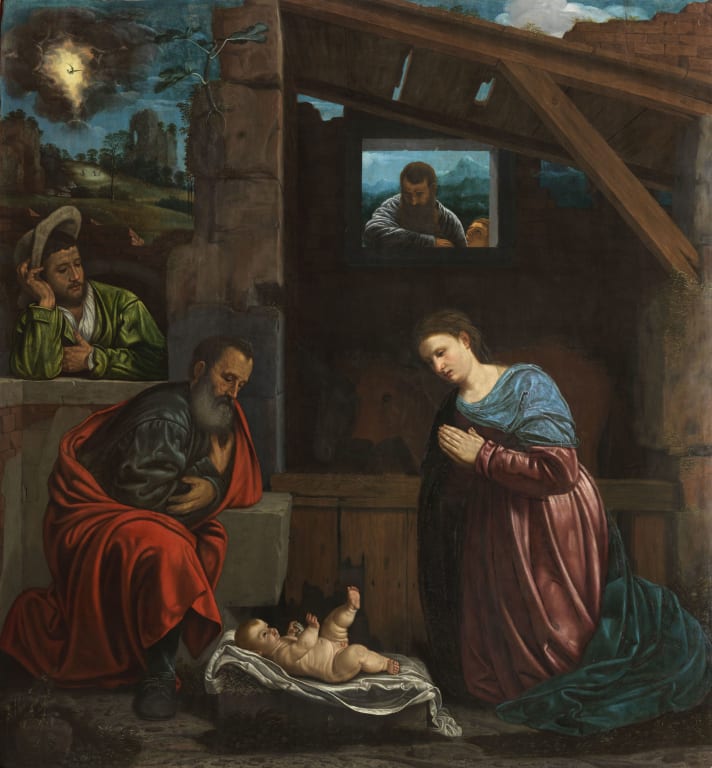
Giacomo Ceruti: a different view onto the 18th century
The Pinacoteca Tosio Martinengo is the museum of Giacomo Ceruti par excellence. Ceruti was a Milanese painter who at the beginning of his career worked in Brescia, where he left an extraordinary series of masterpieces dedicated to the representation of scenes of daily life, populated by destitute people (or pitocchi, hence his sobriquet by which he is best known: Pitocchetto).
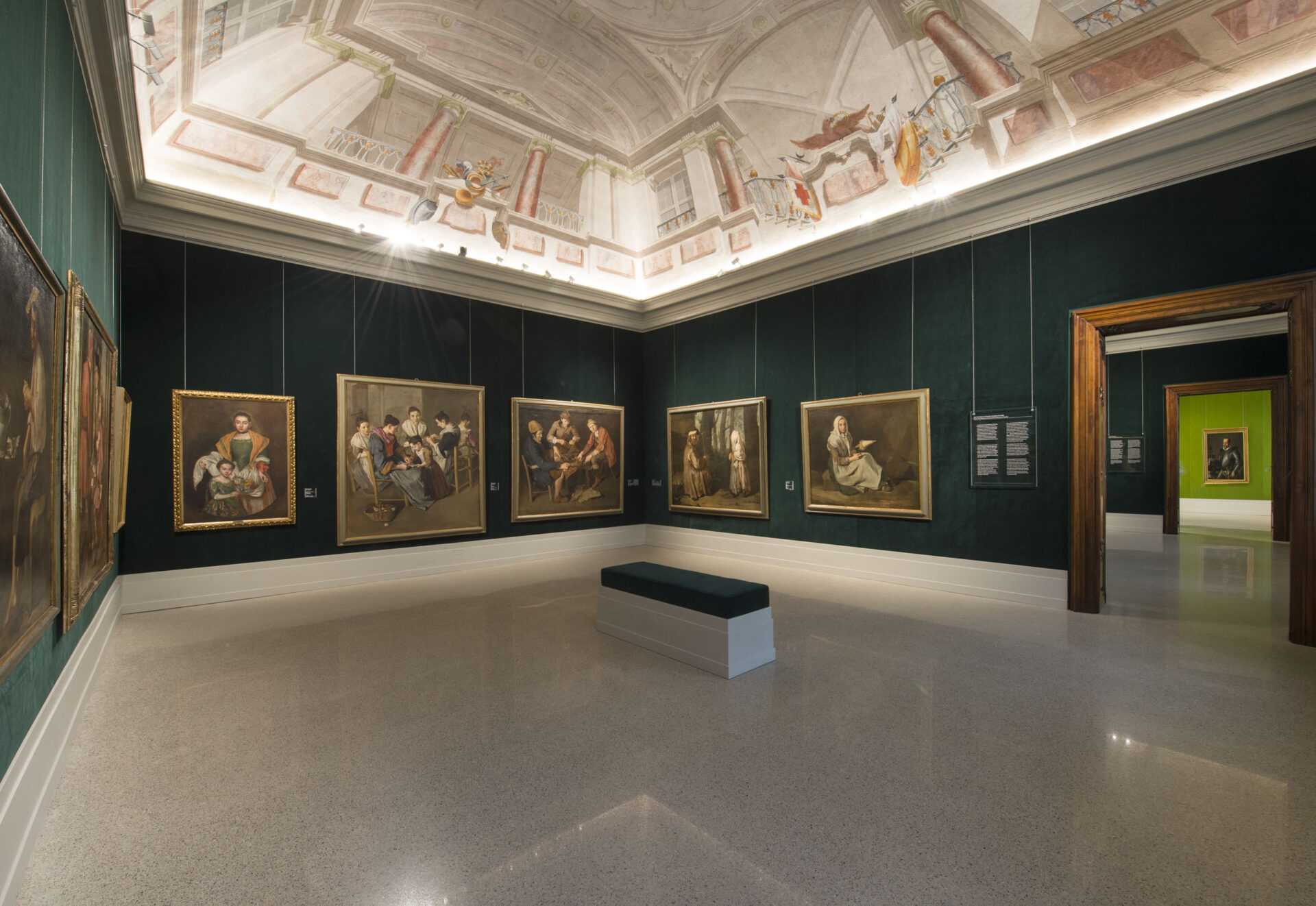
These paintings were much appreciated in the aristocratic homes of eighteenth-century Brescia, and, far from the light, carefree tone typical of genre painting, they are characterised by a sense of deep human participation: the dignity of the characters is accentuated by the size of the figures, devoid of any caricatural trait, and by the realistic representation of the situations, with no trace of grotesque or picturesque traits, presenting themselves as highly realistic depictions of realty.
Ceruti’s entire poetic world is condensed in his famous Laundress: in a silent, dusty courtyard, whose greyness seems to spread even over the clothes of the figures, the laundress interrupts her work for a moment, looking up at the viewer with tiredness and melancholy, while behind her a young helper drearily walks keeping his head low. There is no narrative pretext in this laconic representation: its essence is the artist’s search for truth and attempt to capture all the sorrow and monotony of everyday life. Ceruti relies on bare brushwork and an earthy, almost monochrome palette, which is only brightened up by the woman’s clothes.
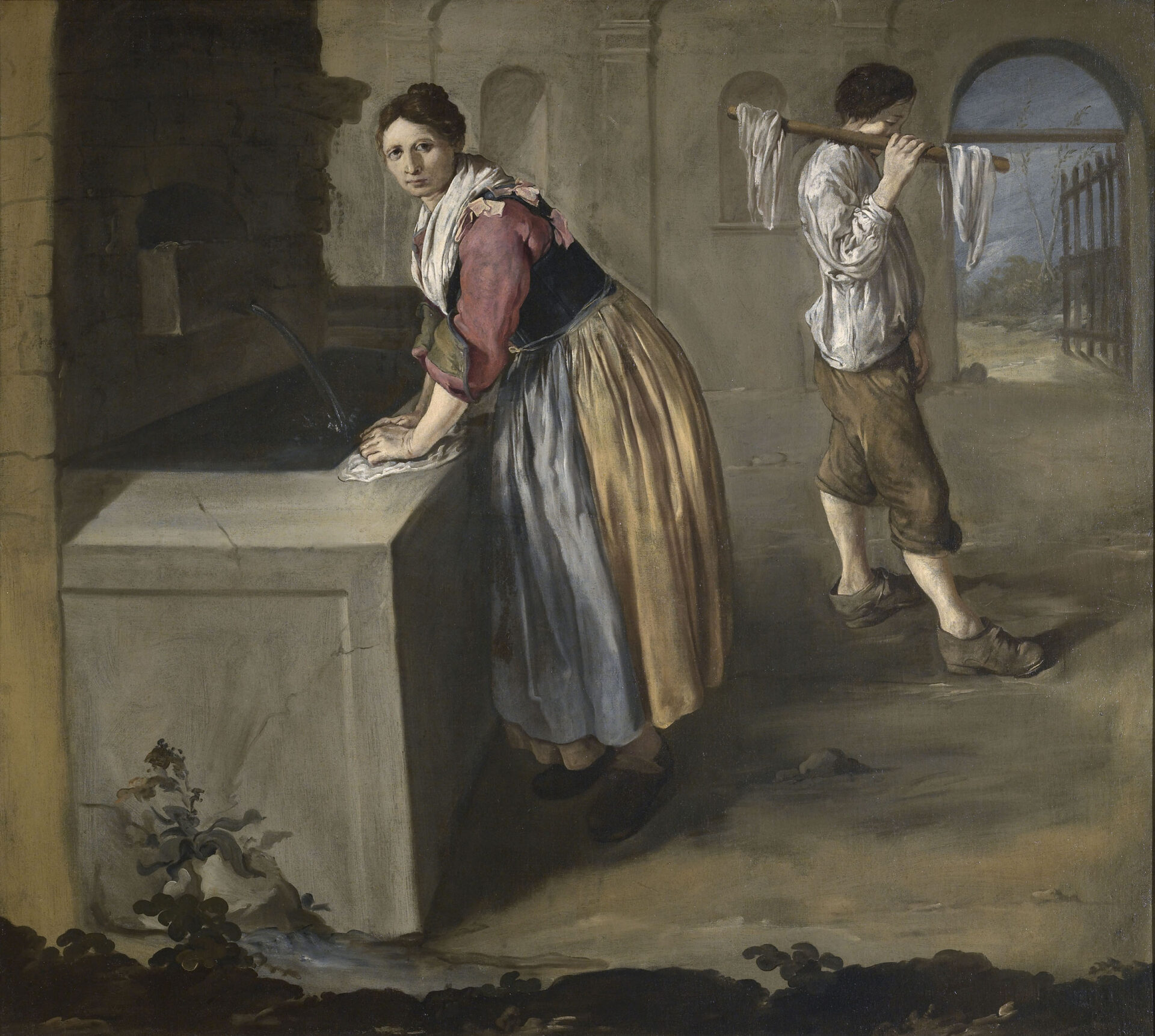
Venetian glass from the Brozzoni collection
In 1863, the year of his death, Brescian collector Camillo Brozzoni donated his art collection to the Municipality. The collection included antique and modern paintings, prints and objects such as ceramics, bronzes, medals, jewels, ivories, enamels and an extraordinary selection of Venetian glass, whose preciousness and distinctiveness was already recognised by his contemporaries.
His collection, defined as a “novel of industry”, is a reflection of the European trend that re-evaluated decorative arts, which in the final decades of the nineteenth century would have significant repercussions on museum collections, on artistic languages and on craft and industrial production, such as the rediscovery of techniques and types of Renaissance craftsmanship, to be taught to young artists to educate their taste and hone their skills.
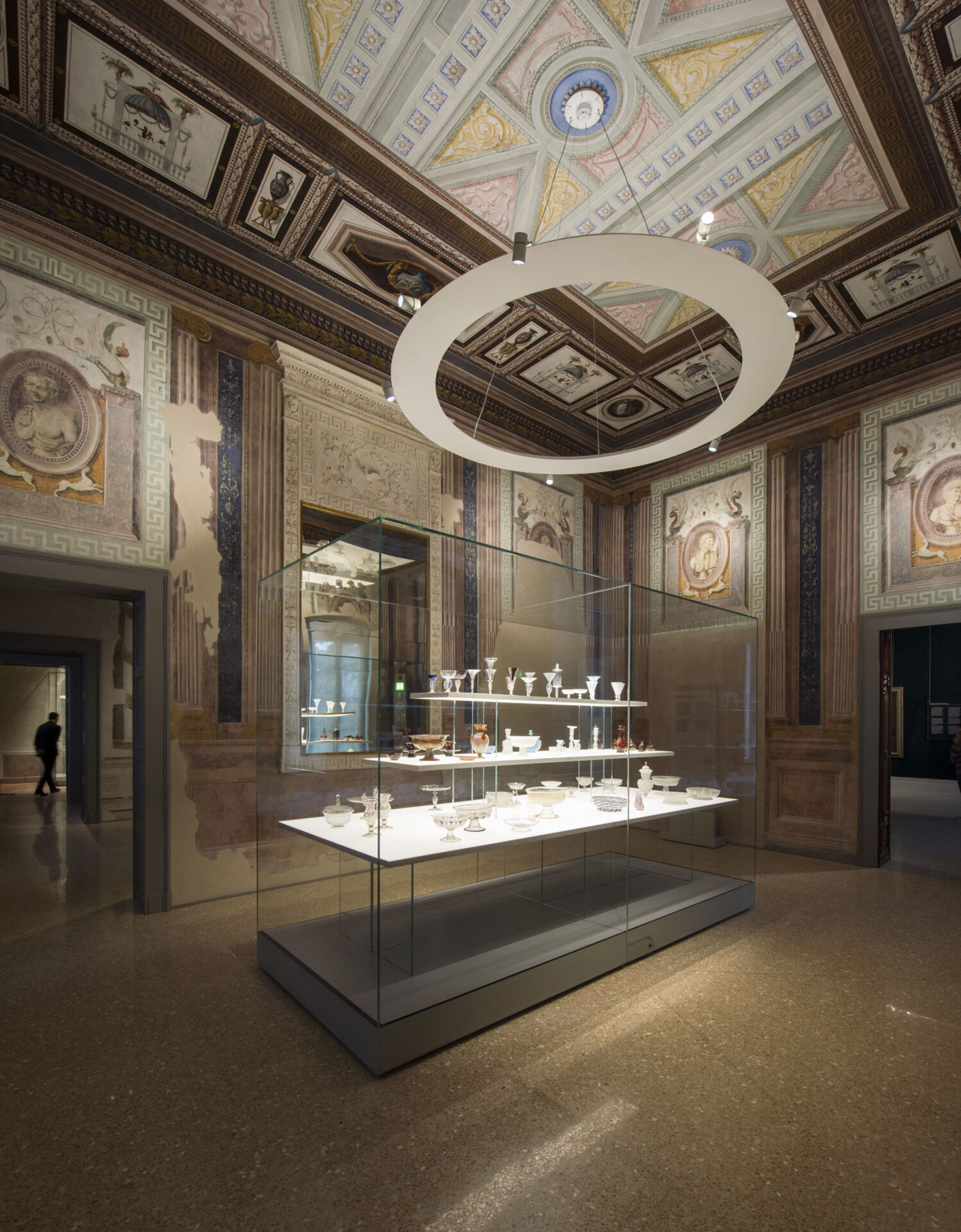
The collection, on a par with the most important European collections for its value and variety, constitutes a unique sample of the techniques and typologies that enriched Venetian glass production between the fifteenth and eighteenth centuries, presenting a unique repertoire of shapes.
Room 13 of the Pinacoteca presents an extraordinary selection of this precious collection: alongside a number of well-known masterpieces, the collection displays a variety of exhibits documenting different techniques and types of Murano glass: from milk glass (lattimi) to blown glass decorated with refined filigree motifs, from calcedonio glass, obtained by mixing different materials so as to obtain an effect similar to that of polychrome agate, to diamond-etched Baroque glass.
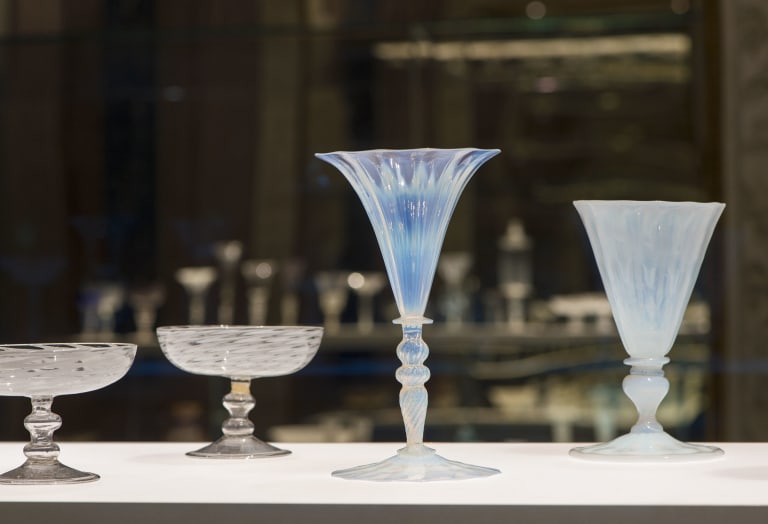

Collection
The Pinacoteca Tosio Martinengo collection was formed between the nineteenth and twentieth centuries thanks to the generosity of private citizens who donated their collections and to the care the Municipality put into collecting and preserving works of art and historical memories that had defined the identity of the city over time and that the important administrative and urban transformations that began at the end of the eighteenth century were gradually removing from their original uses.
The Nineteenth-Century Lombard Art Network
Fondazione Brescia Musei is the new front-runner of the Rete dell’800 Lombardo, the Nineteenth-Century Lombard Art Network founded in 2004 and reconstituted in 2019 with the support of Regione Lombardia.
Twelve important institutions today recognise the roots of their identity in the artistic and cultural heritage of nineteenth-century culture in Lombardy, testifying with their collections to the richness, multiplicity and complexity of that period.
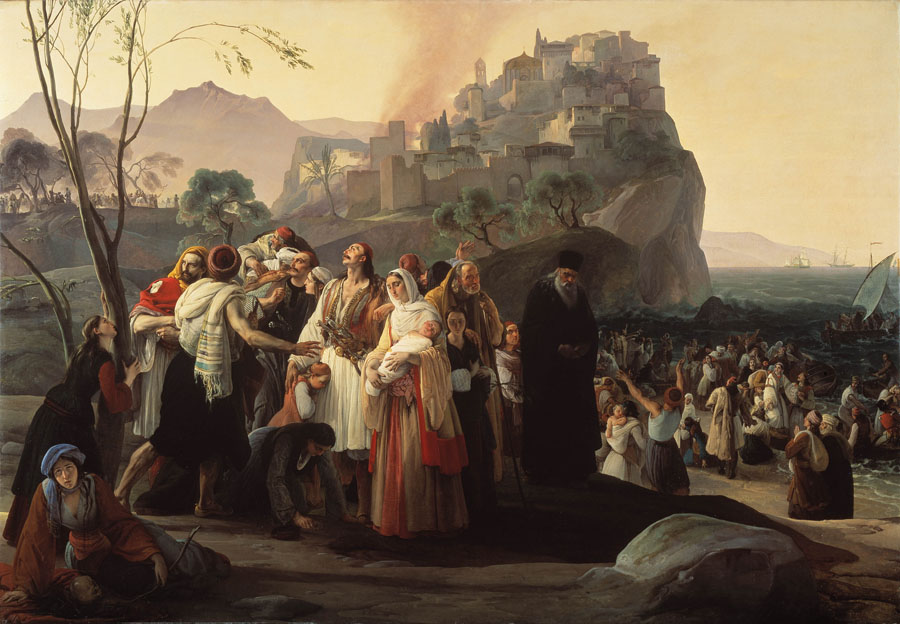
Exhibitions and Events
EasyGuide
Discover the masterpieces of the Pinacoteca Tosio Martinengo with the EasyGuide!
An innovative multimedia guide that is free, simple and usable directly from your smartphone! Access to the contents is immediate and takes place by scanning a QR code.
Information
It is recommended that you buy a ticket.
For conservation reasons, the temperature in the museum rooms is maintained at around 20°C. Visitors are therefore advised to bring an over garment for use during the visit.
Pricing
Present your entrance ticket for the Pinacoteca Tosio Martinengo at the ticket office of the Accademia Carrara di Bergamo and you will receive an entrance ticket at the reduced rate of 10.00€.
The Accademia Carrara entrance ticket allows entry to the Pinacoteca Tosio Martinengo at the reduced rate of 6.00€.
Opening times
Summer timetable (1 June – 30 settembre):
- Mondays (non-holidays): Closed
- Tuesday, Wednesday, Thursday, Friday, Saturday, Sunday: 10.00 a.m. – 7.00 p.m.
- Last admission: 6.15 p.m.
Winter hours (1 October – 31 May):
- Mondays (non-holidays): Closed
- Tuesday, Wednesday, Thursday, Friday, Saturday, Sunday: 10.00 a.m. – 6.00 p.m.
- Last admission: 5.15 p.m.
Information and booking
Should purchasing tickets online prove impossible we recommend contacting the CUP – Centro Unico Prenotazioni Booking Centre (Monday – Saturday, from 10 a.m. to 6 p.m.)
Accessibility
Access for visitors with disabilities
The ground floor and first floor of Pinacoteca Tosio Martinengo are fully accessible.
A lift assures access to the upper floor.
Facilities
The following services are available to visitors:
- A wheelchair (to be requested at the ticket office)
- An accessible restroom
Accessible parking
To visualise accessible parking spaces closest to the museum, please check the Brescia Mobilità website
Services
The “Geronimo Stilton. Brescia Musei Adventures” app-game
Fabumouse news for all the little Geronimo Stilton fans: the mouse-journalist most loved by children the world over, has arrived in the museums of Brescia for an adventure that will make their whiskers twitch with excitement!
For the first time ever, Geronimo Stilton is the protagonist of a museum app-game dedicated to children aged 6 and over entitled Geronimo Stilton. Brescia Musei Adventures.
All you need is a smartphone or tablet provided by the Fondazione Brescia Musei to take part in “Geronimo Stilton, a brushstroke adventure”: in the Pinacoteca Tosio Martinengo a storm has just ruined the painting that Geronimo had made for his office and it will be up to the children, app in hand, to help him find among the masterpieces on display in the Pinacoteca the same elements that he had included in his painting.
Free rental of the device (tablet) at the Pinacoteca Tosio Martinengo ticket office.
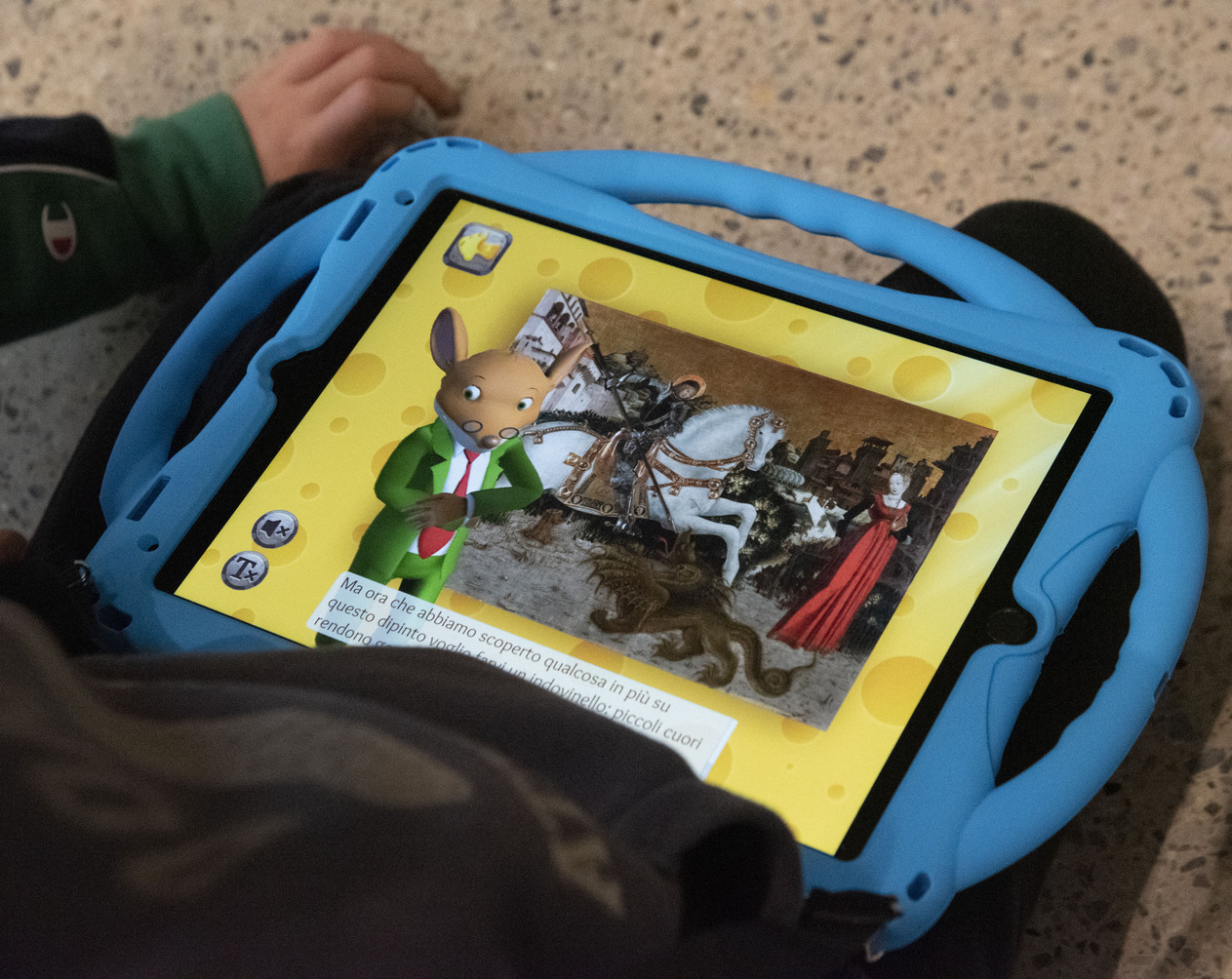
EasyGuide
Discover the masterpieces of the Pinacoteca Tosio Martinengo with the EasyGuide!
An innovative multimedia guide that is free, simple and usable directly from your smartphone! Access to the contents is immediate and takes place by scanning a QR code.
Bookshop
The Pinacoteca Tosio Martinengo Bookshop, located next to the ticket office, offers a wide selection of books dedicated to the museum, as well as a rich selection of merchandise.
Cloakroom
The Museum has a cloakroom area in with security lockers for storing personal items.
Cost of the service: € 1.00
(The 1 € will be refunded at the end of the visit).
Baby changing table
The museum has one baby changing table in the restroom.
Pets
Dogs are not allowed in the Santa Giulia Museum and its outdoor areas, with the exception of guide dogs for people with visual impairment.
Photos and videos
Photographs with no flash are allowed.
Fondazione Brescia Musei welcomes its visitors to share their photos on their social media channels.
Getting here
Piazza Moretto, 4 – Brescia
By Bus and subway
- by bus: check bus routes on the Brescia Mobilità website
- by subway: Piazza Vittoria stop + a 10-minute walk
By Taxi
Radio Taxi Brixia
tel. (+39) 030.35111
Car parking
- Arnaldo, piazzale Arnaldo
- Goito, via Spalto San Marco
- Fossa Bagni, via Lombroso
- Agip, Piazza Vittoria
- Castellini, via Castellini
To visualise all the parking areas and the ZTL areas (zones of restricted circulation) please check the Brescia Mobilità website
Bicimia
Go to the Brescia Mobilità website to discover this bike service
By Train
Reach us by train, then from Brescia Train Station:
- on foot: 20-minute walk, direction Piazza Duomo, then via Moretto
- by subway: Vittoria stop + 10-minute walk
By Plane
Gabriele D’Annunzio Brescia Airport
(20 Km from Brescia)
Orio Al Serio Bergamo Airport
(56 Km from Brescia)
Valerio Catullo Verona Airport
(70 Km from Brescia)
